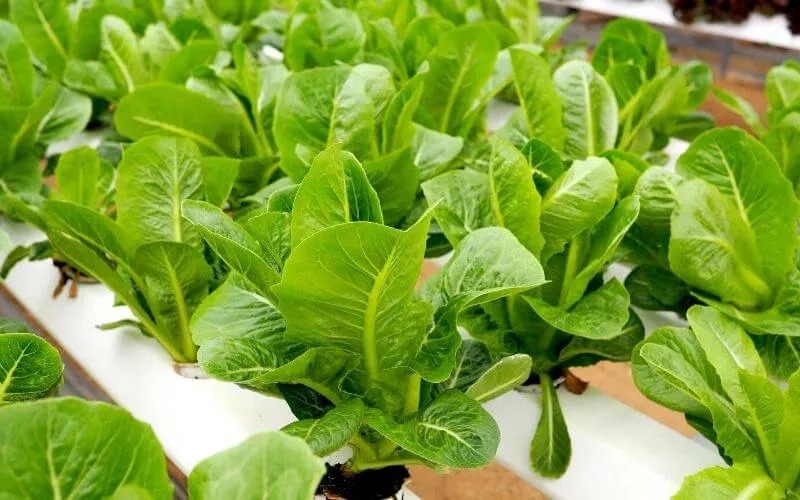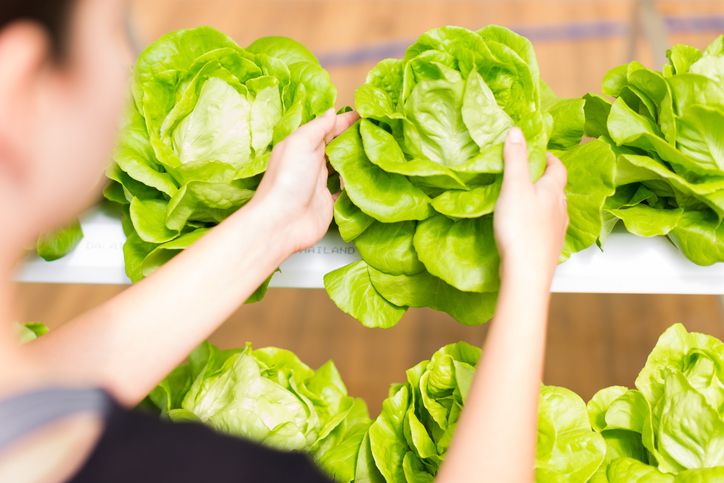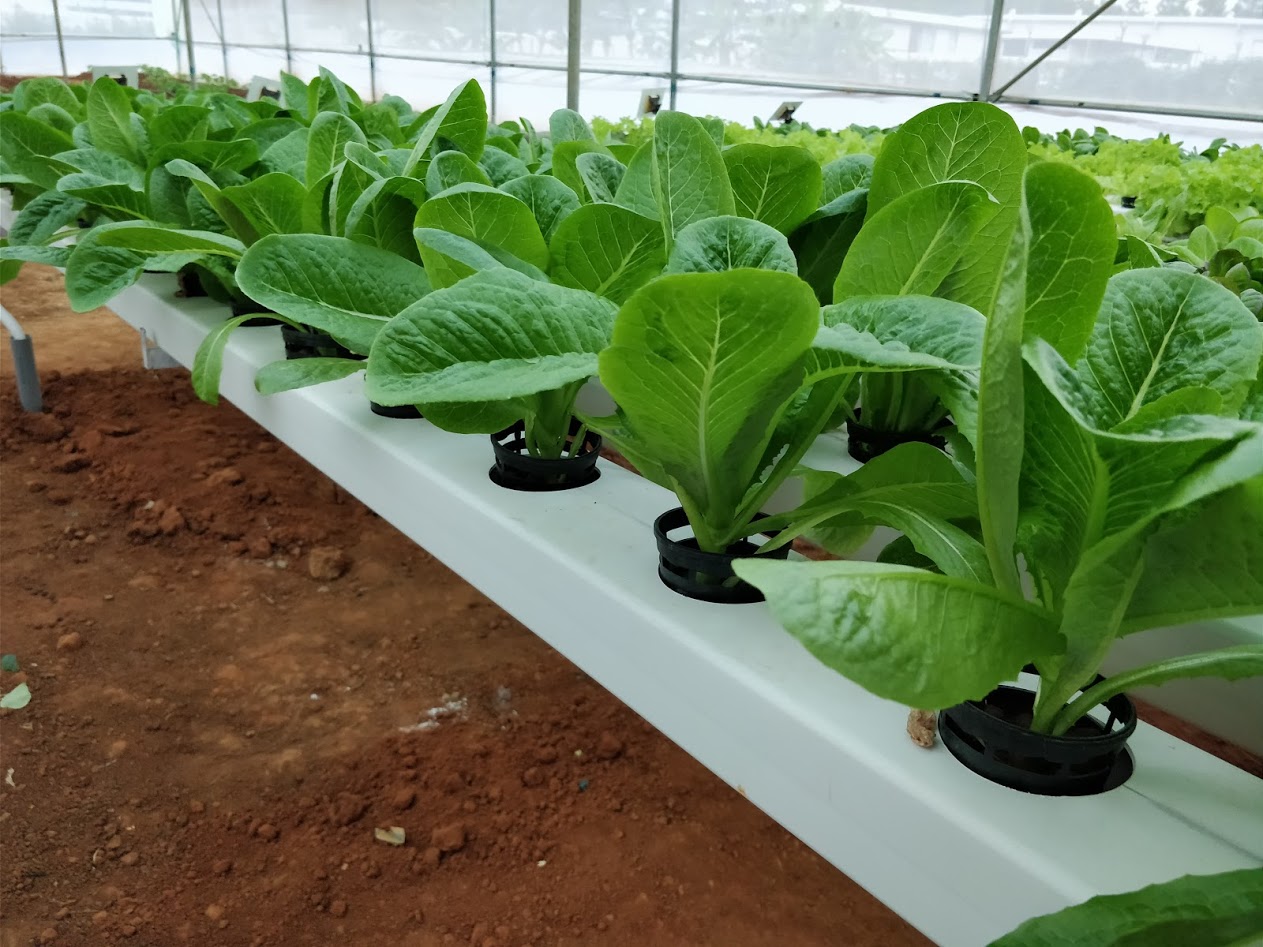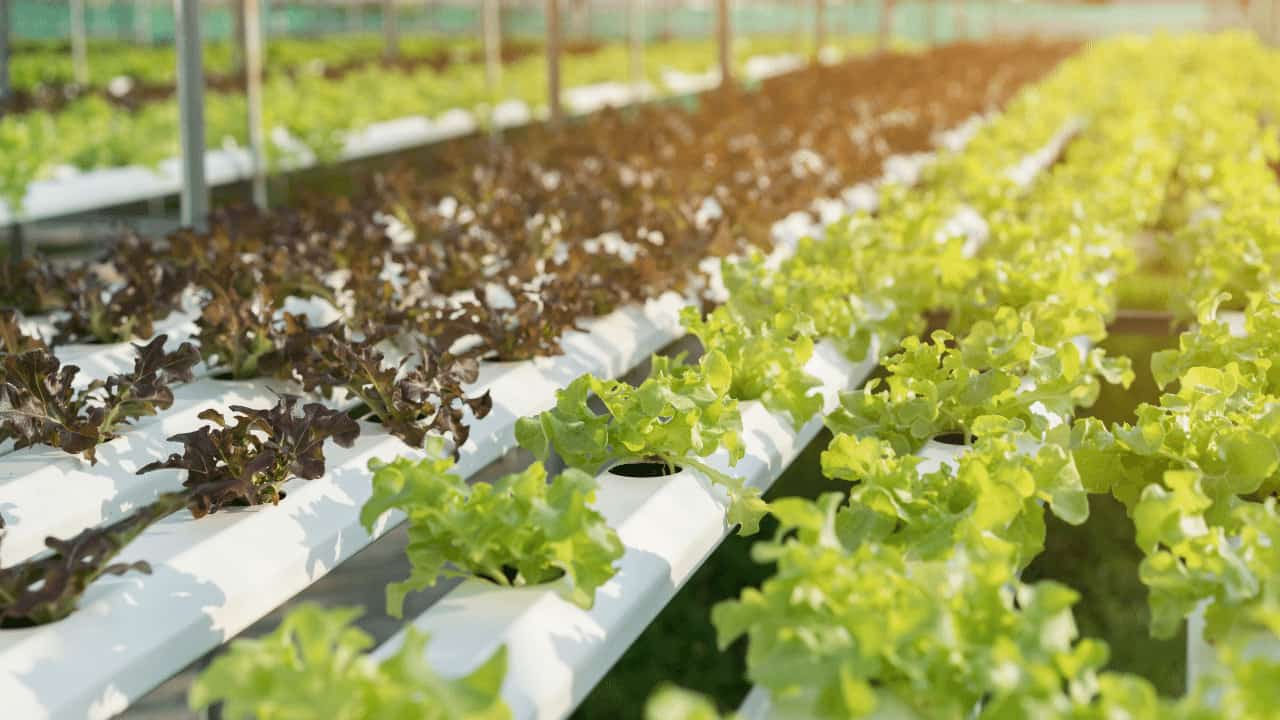How To Grow Hydroponic Lettuce
Growing hydroponic lettuce offers a convenient and efficient way to cultivate this crisp and nutritious leafy green in a controlled indoor environment. Hydroponics provides an optimal system for lettuce cultivation, ensuring consistent water and nutrient delivery, resulting in vibrant and healthy lettuce plants.
What Type of Lettuce Is Best for Hydroponics?
As a hydroponic grower, you have the advantage of being able to cultivate a wide variety of lettuce types, each offering its own unique flavor and texture. With so many delicious and versatile options, it can be difficult to choose just a few. To help you decide, here are some of the best types of lettuce that are well-suited for hydroponic growing:
Hydroponic Butterhead Lettuce
Butterhead lettuce has a deliciously soft and velvety texture, and its sweet and buttery taste make it the perfect addition to any meal. This variety of lettuce is particularly popular in salads, sandwiches, or even lettuce wraps due to its large, flexible leaves. The pliability of the leaves makes it easier for cooks to work with when creating delicate dishes like taco boats or stuffed vegetables.
Hydroponic Oak Leaf Lettuce
Hydroponically grown oak lettuce leaf is becoming increasingly popular among home gardeners and professional growers alike. This variety of lettuce is well known for its sweet yet nutty flavor and buttery, soft texture, making it a favorite choice in many recipes. It's also attractive in salads and sandwiches thanks to the striking reddish-green color of the leaves.
Hydroponic Romaine Lettuce
Hydroponic romaine lettuce is a popular lettuce among many home gardeners and professional farmers alike. Its crunchy texture, mild flavor, and ease of plant growth have made it a staple crop worldwide. Growing romaine in hydroponics harnesses the advantages of the setting while avoiding potential contaminants found in soil-grown crops.
How to Grow Hydroponic Lettuce
Hydroponic lettuce is an ideal crop for hydroponic growers because it matures relatively quickly and produces a large yield. Unlike planting regular lettuce seeds, which requires soil and sun exposure, you can grow lettuce hydroponically just about anywhere without the complexity of maintaining a traditional garden.
Hydroponic lettuce requires much less maintenance and needs fewer resources than traditional gardening – something that makes it so attractive to indoor farmers.
What Is the Best Temperature for Hydroponic Lettuce?
When growing hydroponic lettuce plants, the temperature needs to be carefully monitored. In general, germination of lettuce should take place in temperatures between 65°F and 80°F. This is ideal for planting seeds indoors, or in the cooler months of spring or autumn when growing outdoors.
After a seedling has grown and developed its first few mature leaves, you can lower the temperature slightly to 55°F at night, while keeping it a warm 75°F during the day. This environment is perfect for optimal growth without sacrificing flavor or texture.
If the temperature goes below 55°F at night or above 80°F during the day, it can cause damage to your plants and even inhibit germination altogether. Additionally, many lettuces don't do well in temperatures over 85°F and will start to wilt or rot if left in those conditions for too long.
Humidity should also be taken into consideration as keeping indoor humidity levels around 50%-60% can help prevent unwanted diseases from growing on your crops. With attentive monitoring and well-maintained conditions, hydroponic lettuce can thrive with just the right temperature range for best results!
How Much Light Is Needed for Hydroponic Lettuce?
Hydroponic lettuce is a great choice for those looking to reduce their carbon footprint by growing an easily-available vegetable in their own homes. To successfully grow hydroponic lettuce, the plant needs a sufficient hours of light per day to prosper.
When starting out, seedlings should be exposed to 18 hours of strong direct sunlight or LED lights everyday with 6 hours of darkness. Once the plants are established and more mature, they will still need sufficient amounts of light to thrive and should be exposed 10 to 14 hours each day.
Good lighting conditions are essential for successful hydroponic lettuce growth – too much or too little light can cause entire plants to bolt prematurely and stunt growth, leading to small heads of lettuce that lack flavor.
Hydroponic Lettuce Nutrient Requirements
When growing hydroponic lettuce variety, it is important to establish the proper nutrient levels in order to ensure that your crop thrives. The pH level should be kept between 5.5 and 6.0, this range helps to ward off diseases and decay. Additionally, calcium levels must remain abundant in the system for preventing wilted or burned leaves.
In terms of essential macro-nutrients required for hydroponic lettuce growth, nitrogen is an especially important element for ensuring tall plants; around 5 parts nitrogen per million parts of water should be found in the system when these lettuces are at their peak of development.
Alongside nitrogen, phosphorus and potassium are necessary for optimal growth; these should both be approximately 15-20 parts/million with magnesium levels hovering around 3 parts/million.
Attaining the correct NPK balance ensures sufficient energy and nutrition is available to the hydroponic plants while they are growing so that they continue on a productive course of development.
How Long Does It Take Lettuce To Grow Hydroponically?
Hydroponic lettuce is a great option for those who want to enjoy freshly-grown produce without the need for a traditional garden. This type of lettuce seedling is grown using nutritious liquid solutions, eliminating the need for soil or traditional fertilizer and simplifying the growing process. As a result, hydroponic lettuce grows quickly and can be harvested more than once.
In general, it takes most varieties of hydroponically-grown lettuce six to eight weeks from seedling to harvest. It is important to note, however, that this time frame can vary depending on the specific type of lettuce being grown and the ambient temperature in which it is grown.
During cooler weather conditions, growth times may take longer – sometimes up to 12 weeks in some cases – while warmer temperatures can accelerate growth rates. By carefully controlling these environmental factors, growers are able to optimize their results and enjoy fresh, healthy salads sooner.
Harvesting Hydroponic Lettuce
Harvesting hydroponic lettuce is an incredibly straightforward process. Growers simply need to remove the plant, root system and all, for immediate sale. The most convenient way of harvesting hydro lettuce is to cut the head off just above the root and discard the rest of the system.
This prevents you from having to go back later to remove it and ensures that you are efficient with your harvest time. It's important to note that it may be wise to get rid of any individual leaves near the base of the plant if they aren't as crisp or appetizing as those further up since these can affect taste or texture when consumed.
How To Store Hydroponic Lettuce
Hydroponic lettuce can be easily stored for a longer period of time than soil-grown lettuces, making it an ideal choice for those who want to ensure their lettuce stays fresh. The best way to store hydroponic lettuce is in a refrigerator, as this provides the cool temperatures and damp environment that will keep your lettuce garden from going bad and wilting quickly.
Alternatively, you can also set the lettuce on the kitchen counter with the plant roots in a bowl of water. This will still provide enough heat and humidity for your lettuce to remain fresh for up to one week before it begins to wilt.
Health Benefits Of Hydroponic Lettuce
Hydroponic lettuce is a fantastic way to get healthy and enjoy delicious healthy lettuce. Not only does it have all the same nutritional qualities as soil-grown lettuce, but it's also far less likely to suffer from potential contamination.
For health benefits, hydroponic lettuce provides essential Vitamin K which is great for bone strength. It's also rich in vitamin A which helps to support eye health. As hydroponic lettuce is up to 95% water level, not only can it help with the hydration of an individual, but it can also be useful in helping cleanse and flush out toxins from the body.
Why Is My Hydroponic Lettuce Dying?
Growing hydroponic lettuces in a greenhouse is an exciting way to enjoy fresh, healthy greens year-round. Unfortunately, these hydroponic crops are also sensitive to their environments and can quickly die if certain issues arise.
A common problem that can cause serious damage to lettuce is an imbalance of nutrients or pests in the water supply. Additionally, temperature and adequate light levels must be carefully monitored and regulated within the greenhouse system.
How Long Does Hydroponic Lettuce Last?
Hydroponic lettuce is a type of lettuce that is grown without soil, using water, essential nutrients and light instead. The advantage of this hydroponic method of gardening is that it produces fresh, lightweight lettuce with a longer shelf life than traditional lettuce.
When it comes to storage and shelf life, the most important factor in keeping hydroponic lettuce fresh for longer is how it is harvested - if the lettuce roots are kept attached when picking the lettuce then it can last two to four weeks before needing to be consumed or replaced.
Is Lettuce Easy to Grow in Hydroponics?
Lettuce is a great candidate for hydroponic growing due to its fast maturation rate and ease of cultivation. Hydroponics requires a carefully monitored environment to maintain optimal growing conditions, but lettuce has fewer needs than other crops which makes it an ideal choice for hydroponic garden.
When grown in a hydroponic system, lettuce can reach full maturity in as little as 30 days, making it one of the fastest-growing food staples available.
Final Thoughts On How To Grow Hydroponic Lettuce From Home
Growing hydroponic lettuce is a rewarding experience that can provide you with an abundance of delicious, fresh-picked produce. Before getting started, it's important to have the right supplies to ensure your plants will receive the best possible care. It's incredibly simple to do with the right supplies, which you can find here at Canada Grow Supplies. Once you're equipped with the right supplies, it's time to plant!












